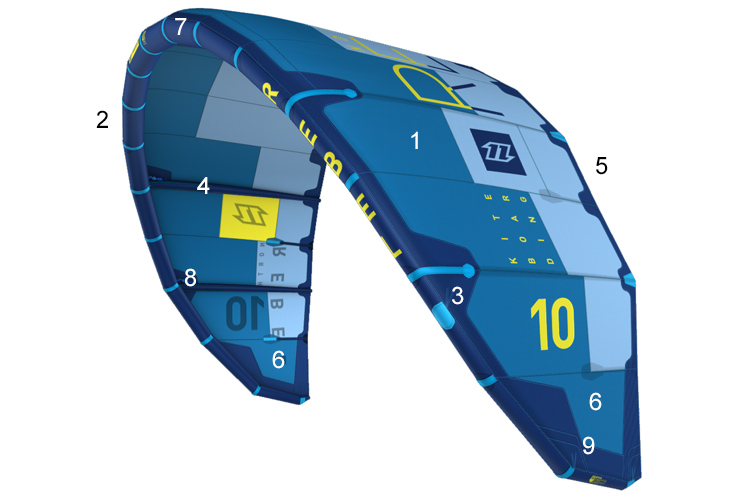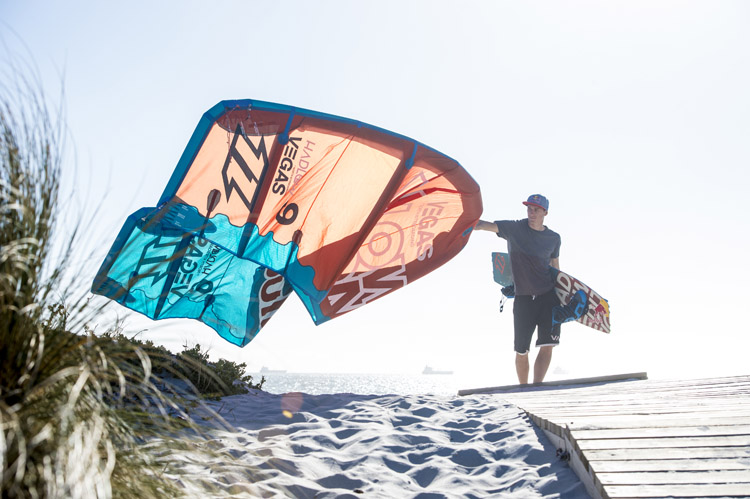Discover the different parts of a kite. Learn their technical names and what they're for.
Kiteboarding kites are flying machines powered by the wind. They're more than just a wing made of ripstop polyester or high-tech fabrics.
Kites are an aerodynamic structure meticulously designed for having fun.
When the wind hits the kite, it creates lift and propels the rider forward.
Understanding the components of a kite will improve your riding performance and your safety as well.
So, if you're a beginner, make sure you know what's what in your kite before launching your kite up in the sky.
Kites are not all the same.
There are subtle differences from brand to brand and from one type to another, but they all come with a few basic features.
Each part of the kite system has its function, so get familiar with its components and terms:

1. The Kite Canopy
The kite canopy are the main fabric panels holding the kite's different structural elements.
2. The Leading Edge (LEI)
The leading edge is the primary bladder or the front tube that holds the air.
When the kite crashes on the water, the LEI allows us to relaunch it because it floats the kite.
3. The Bridles
The bridles are a colored line system located on the port and starboard sides of the LEI that keep the kite balanced in the air.
4. The Struts
The struts are the rigid air chambers that provide the shape and structure of the kite.
Most kites come with between three and seven struts, depending on the weight of the rider and its use (wave, race, speed, free ride).
5. The Trailing Edge
The trailing edge is the opposite side of the LEI located at the back of the kite.
6. The Wing Tip
The wing tips are the right and left tips of the kite.
They have an impact on the way riders turn, depending on whether they're fuller, squarer, pointier, or narrower.
7. The One Pump System
The one pump system is the single inflation point that pumps the whole kite with air, including the LEI and the struts.
8. The Inflate/Deflate Valves
The inflate/deflate valves are the inflation and deflation points that allow you to fill/empty independent bladders with/from air.
9. The Self-Rescue Handles
The self-rescue handles are the useful handles located near the wingtips that help you get back to shore in an emergency.
Learn more about the kite control bar and the kite lines. Discover the best kites in the market.
